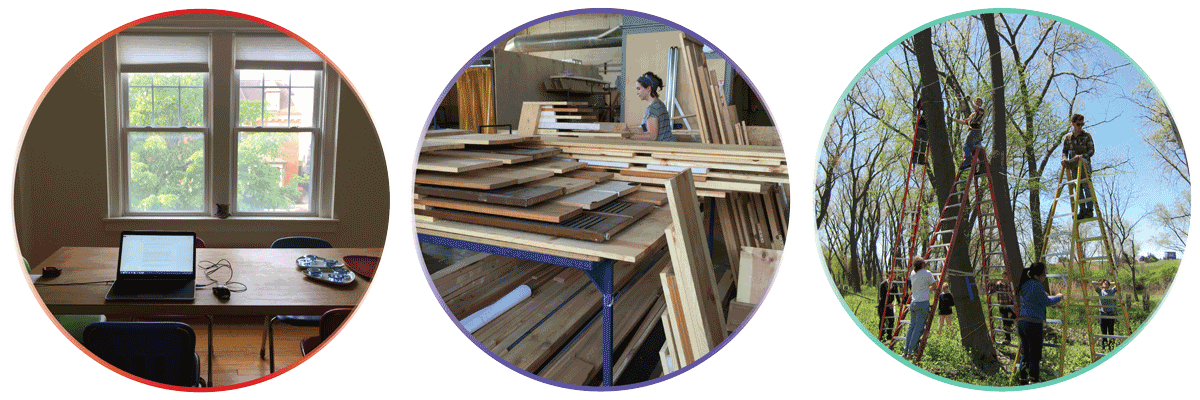Dispersed Practice
by Joyce Hwang Where and how does creative work take place? Where does one situate oneself to practice architecture? This may seem like a simple question with an obvious answer, as we are conditioned to assume that an architect must work in her office, where she “hangs up her shingle.” Yet, for many of us, the issue of workplace is far more complex, one that is that is highly contingent on multiple, often conflicting factors – from project types, funding streams, and personal lifestyle choices. In response to the guest editors’ prompts to consider the “necessary fantasy of the ideal office/space of practice,” I will discuss issues of workplaces in terms of my own practice and how I am navigating the pluralities of a dispersed, multi-locational practice.
I direct Ants of the Prairie, an office of architectural research and design, yet I do not work in a singularly-defined, physical office space – at least not this point in time. This lack of a singular work space did not start off as a matter of choice, but rather a matter of economy. As a small practice that works primarily on research-based, self-initiated projects that are funded by sporadic grants, and small commissions, it has not been economically feasible to rent and establish an office space. Given the admittedly scrappy nature of my practice, I tend to push most of my funding toward developing projects and initiatives, and ensuring that employees and contractors are paid properly, rather than establishing a comfortable physical base for myself.
As a result of defaulting to a kind of professional placelessness, I have become more agile and adaptable in how and where I work. Certainly, the unrooted nature of my practice has been (and still is) a challenge – especially coming from a background where work was the result of a defined environment. As an architecture student, I grounded my work in the physical space of studio, and I subsequently worked in conventional architecture offices where the physicality of the office environment itself manifests as part of the firm’s identity. Yet, this restless unrootedness has also become an accurate reflection of my practice and has even urged new modes of working that have been (sometimes unexpectedly) productive.
Variable Settings
Due to my circumstances as an architect and academic, I typically circulate between my home – and the various home-office spaces within it –and my office at the University at Buffalo SUNY, where I teach. And like most architect-academics, I travel frequently for reviews, conferences, and lectures, in addition to traveling for projects that involve multi-locational collaborators. These circumstances have placed me in a position of having to work in many informal, transitional settings, such as coffee shops, airport waiting lounges, planes, trains, train stations, hotel rooms, and so on. This kind of multi-workspace scenario – one that transitions between formal and informal work settings – is of course not new or unusual. Certainly, many architect-academics find themselves in similar situations, with similarly frequent travel demands. Many academics also find themselves in dual-household scenarios, in which an academic spouse is living and working in a different geographic location, thus prompting even more travel, and therefore more need to acclimate to working in settings of transition and distraction. All this is to say that the fact of having to navigate between multiple types of workspaces has not only increased my tolerance to distraction and forced an ever-present state of adaptability, but perhaps more importantly, it has made me realize the absolute need to embrace the distinctive qualities of inhabiting each type of workspace. I attempt to do this by categorizing and distributing work flows accordingly. For example, quiet and private spaces – such as my home office(s) – lend themselves to more focused work, such as completing a set of drawings, or writing the first draft of an article. In contrast, spaces of distraction – such as airports – are more suitable to other types of work such as responding to emails or copy-editing.
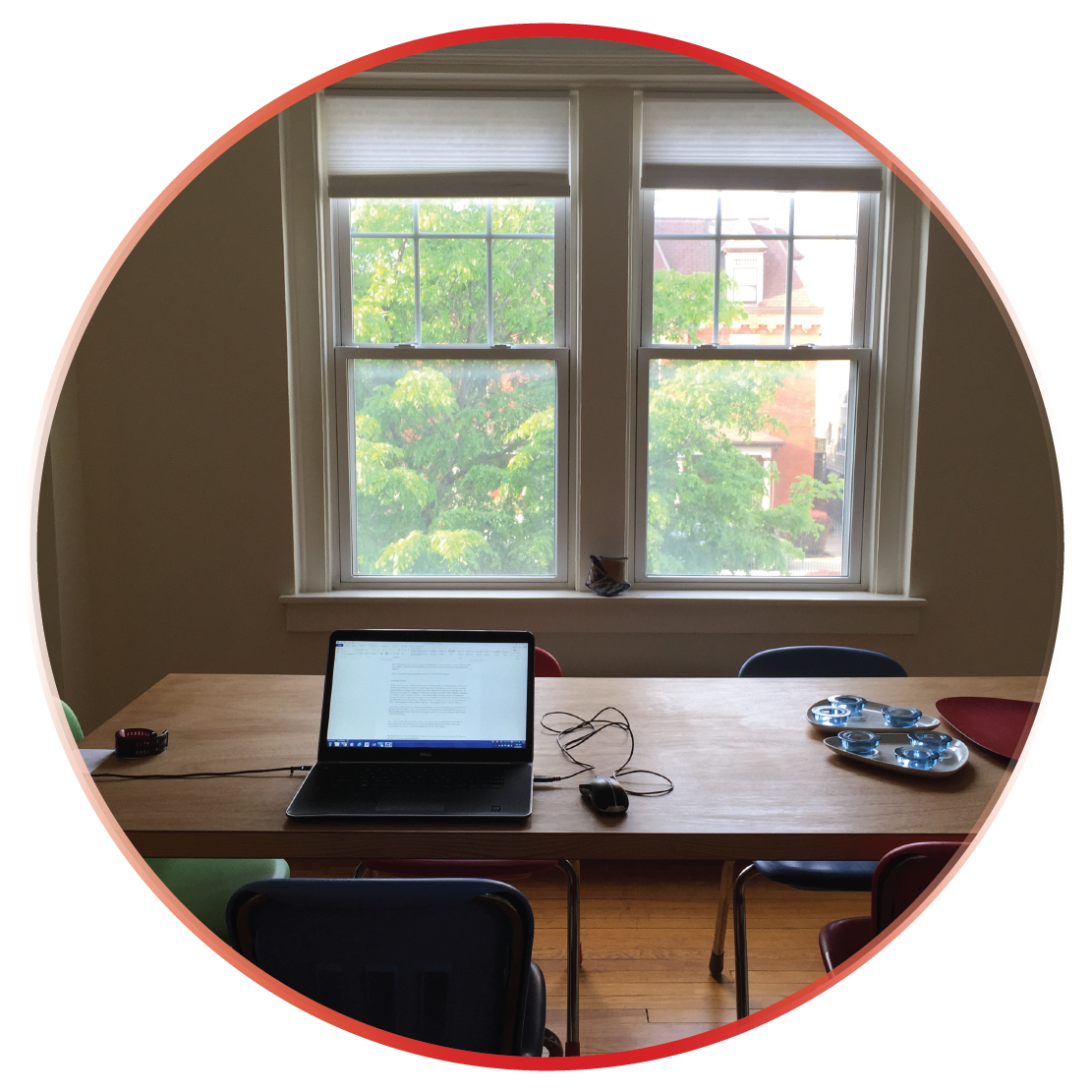
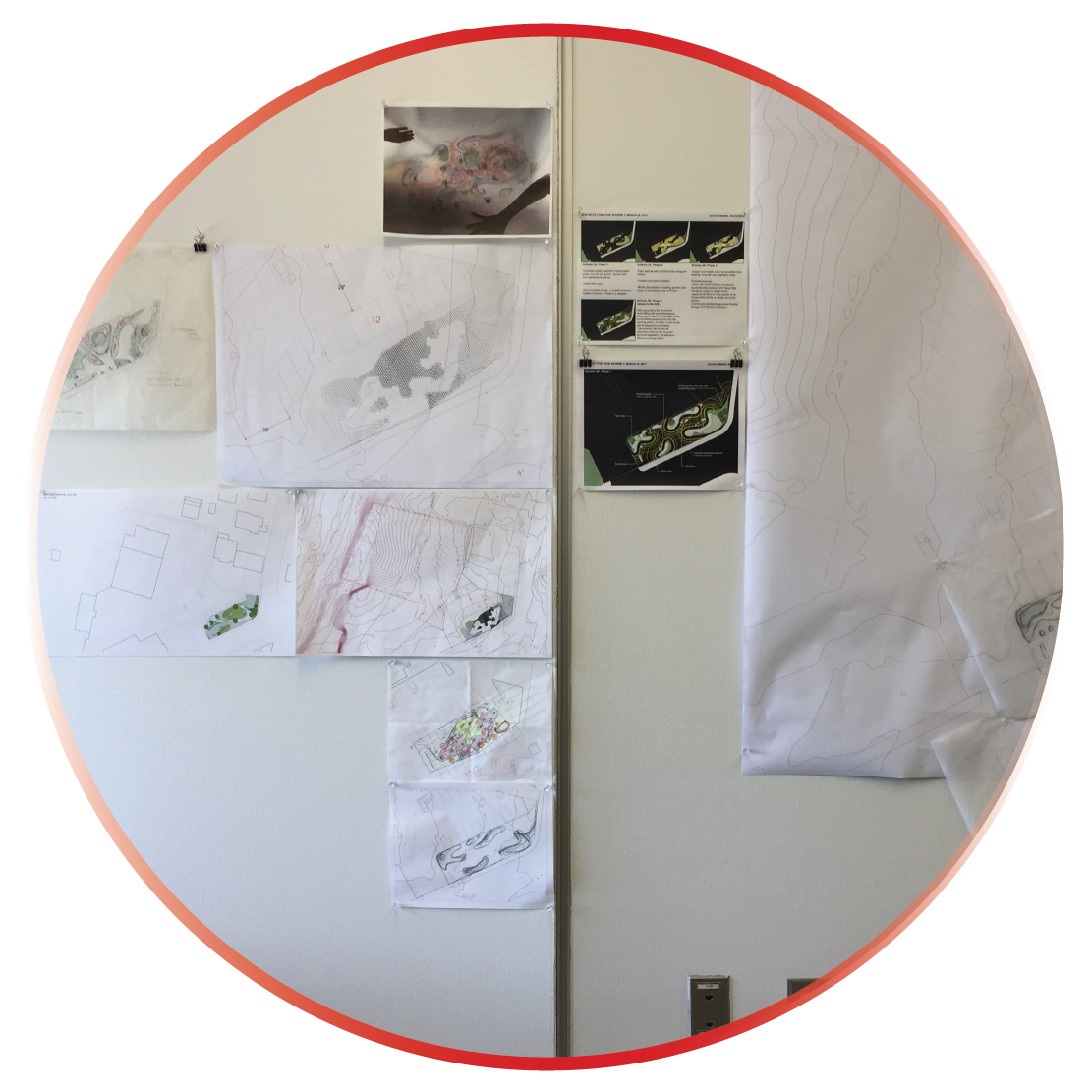
 [1] Working from home in Buffalo, NY.
[2] Ongoing work pinned up in my Hayes Hall office at the University at Buffalo.
[3] Working from home in Cambridge, MA.
[1] Working from home in Buffalo, NY.
[2] Ongoing work pinned up in my Hayes Hall office at the University at Buffalo.
[3] Working from home in Cambridge, MA.
Expanding Workplaces
Expanding spaces of work beyond one’s office space however, is more than a matter of convenience or logistical juggling. My practice has been particularly influenced, shaped, and even inspired by expanding temporarily into alternate physical environments. At the most fundamental level, my work – particularly the design process and projected outcomes—have been profoundly influenced by the UB School of Architecture and Planning’s large, well-equipped woodshop, a facility that urges an intense culture of making within the department of architecture, among faculty and students alike. At times, the woodshop is an expanded part of my workplace. A number of my projects have also been made possible through my temporary appropriation of large spaces and rooms on campus. Available on an ever-shifting calendar of vacancies, these spaces are invaluable in that they function well as staging, testing, and storage areas.
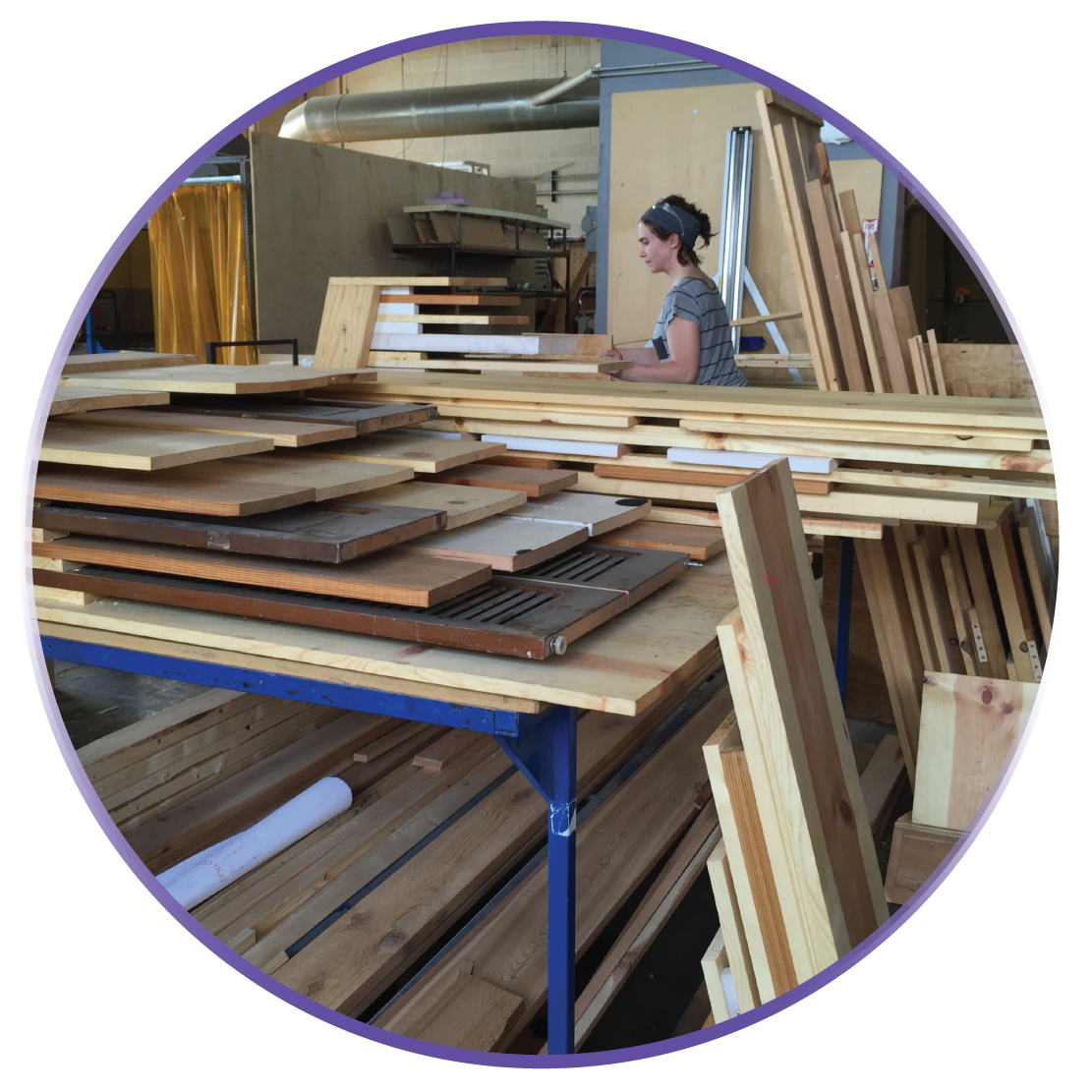
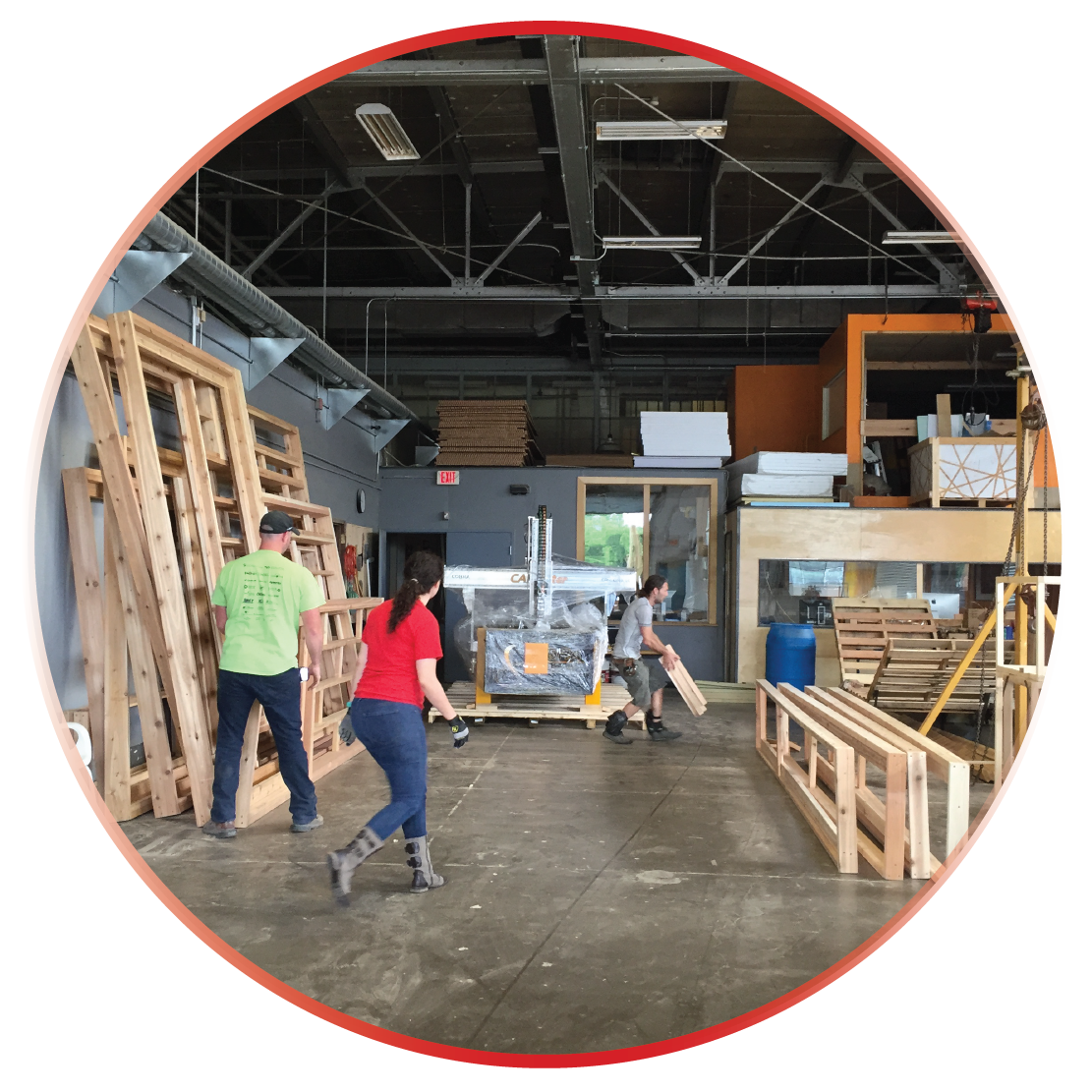

[4] [5] Project storage and assembly at the UB woodshop. [6] On site installation of Bat Cloud at Tifft Nature Preserve.
The further expansion of workplace into the territory of artist residencies has also been particularly influential in shaping my work. Two separate residencies at the MacDowell Colony have given me the opportunity to realize that the remote, yet intensely social space of these environments are critical to my creative process. By forcing us to step outside of the typical workplace and immerse ourselves into a setting that gives us time and space to think wildly and make with (semi) reckless abandon, these environments allow us to confront ourselves – and our desires and fears – while in a focused and intensified state of being. It is the very removal of the typical workplace in artist residencies that make them extraordinarily effective as expanded workplaces, not only for the sake of productivity, but also – perhaps more significantly – for the unbridled chance to think, see, and dream. Unfortunately, the critical and essential acts of thinking, seeing, and dreaming are less available to us, in our contemporary work environments. Indeed, in a world that is ubiquitously networked with Wi-Fi, cell phones, and other mobile technologies, a big part of the challenge of work is to know when and how to tune out from the network and turn off one’s availability to all.


[7] In residence. [8] In transit.
So, the “fantasy of the ideal office space” no longer occupies my mind. The fantasy – if one could call it that – is now to more effectively choreograph physical workplace locations with specific project phases or work activities. What kind of spaces are better for focused work, versus scattered work? What types of environmental conditions and climates are more suitable for writing, versus making? And of course, a pressing question is always: How does one change work environments constantly, without exhausting oneself? I have often thought about how I might create a mobile work room that can be loaded on a truck, or shipped from one location to another. Or at the very least, I like to think about how I might more effectively pack and ship my belongings from place to place. Perhaps one’s home is less of a home, but more of a distribution center. And in this milieu of work environments, I still maintain a grand fantasy, of course, that I will one day (soon) build myself a secluded work studio, in a geographically secluded location. This might be a space and place that would allow me to retreat into a state of intense focus, or enable me to work recklessly without consequence. But I have come to realize that this is only a fragment of the bigger picture, that is as much about management and choreography as it is about physical space.
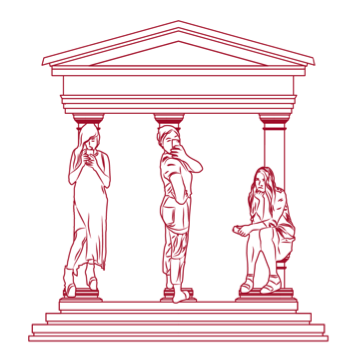
f-architecture (alt: feminist architecture collaborative) is a three-woman research enterprise aimed at disentangling the contemporary spatial politics and technological appearances of bodies, intimately and globally. Partners/caryatids/bffs Gabrielle Printz, Virginia Black and Rosana Elkhatib run their practice out of the GSAPP Incubator at NEW INC, an initiative of the New Museum.

